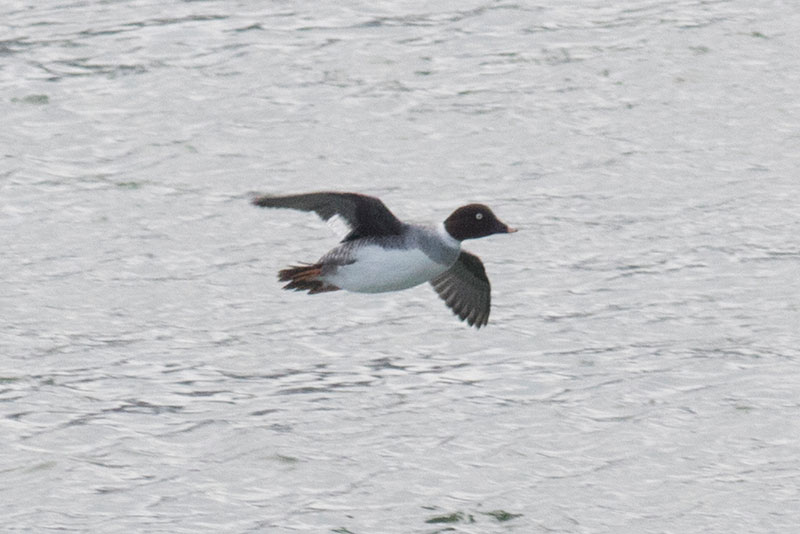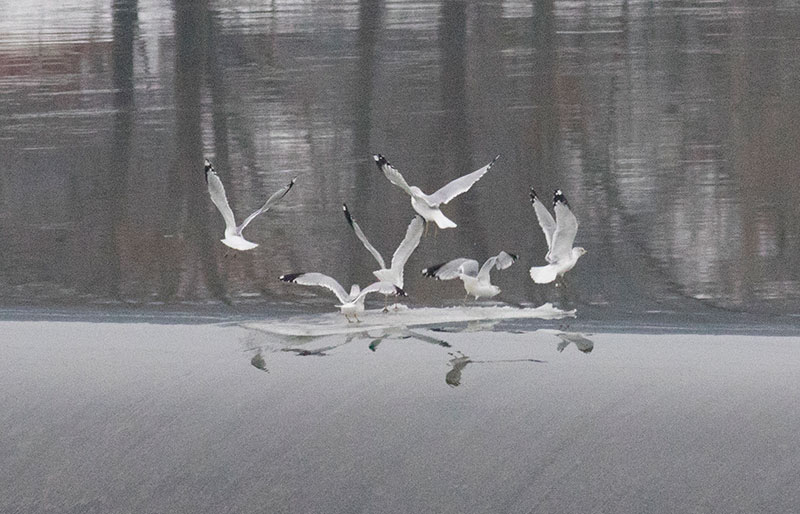Winter 2018 and Great Backyard Bird Count
2/4/18
By David Brown
Winter can seem like a slow time for birds as fewer species are present than the rest of the year. Many of the brightly colored warblers we enjoy in the spring and summer are currently in South America and won't be back for another three months. However, birding in winter can be just as exciting if you look carefully.
The Northern Lycoming Christmas Bird Count was held on December 30th. It was a snowy day and only 40 bird species were found in the 15-mile diameter count circle. One highlight was a golden eagle soaring over a ridge in Jackson Twp. Hundreds of horned larks were feeding in the farmland of Cogan House Twp. Rose Valley Lake was completely frozen resulting in low waterfowl totals.

Common Goldeneye
The Williamsport dam has been a good spot to see waterfowl this winter. As many as 50 common goldeneyes have been gathering near the islands below the dam at dusk. Other waterfowl species have included mallard, American black duck, common merganser, red-breasted merganser, hooded merganser, canvasback, lesser scaup, long-tailed duck and bufflehead. Four species of gulls have been spotted at the dam recently. Hundreds of ring-billed gulls and dozens of herring gulls arrived the third weekend of January. A great black-backed gull, the largest gull species in the world, flew past on January 21st. A rare Iceland gull was seen the next day.

Ring-billed Gulls
Signs of spring migration will begin in the next few weeks. Watch for large migratory flocks of Canada geese, snow geese, and tundra swans flying north in V-formations. Spring raptor migration begins at the end of February as golden eagles begin migrating back to their nesting territories in Canada.
I was recently driving on the highway in Loyalsock when an adult bald eagle flew over carrying sticks and grass. It was probably heading to the nest across the river. Other raptor species are pairing up too.
The Great Backyard Bird Count is February 16-19th this year. This project is run annually by the Cornell Lab of Ornithology and the National Audubon Society. Amateur observers from around the world are encouraged to identify and count the birds in an area such as their own backyard for at least 15 minutes and submit the data to the project website. This is a great event for beginners to get involved with birding. One of best ways to learn to identify birds is by participating in a project like this. You can also upload photographs along with your sightings. If you enjoy the Great Backyard Bird Count you can submit bird sightings all year to eBird. Each individual report may seem insignificant but all of the sightings combined allow researchers to learn a lot about the distribution and movement of birds throughout the year.
Get outside and enjoy the winter birds and pay attention for the first signs of spring migration.